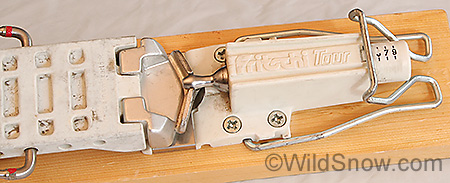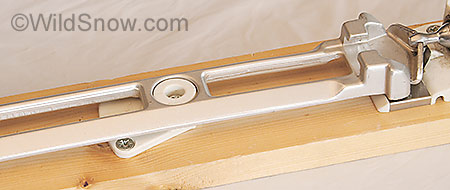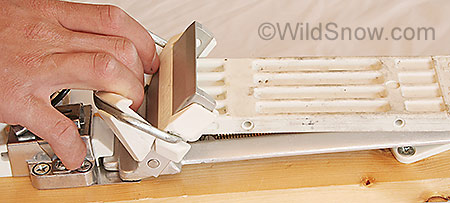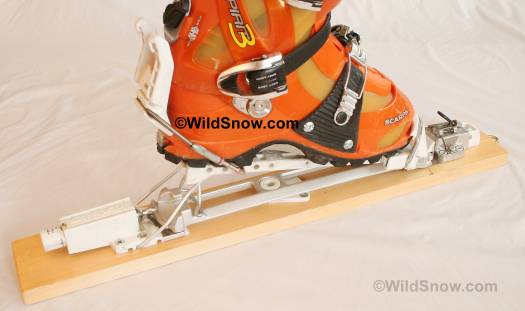Before Fritschi started its revolutionary Diamir series around 1995, starting around 1982 the company made a complex but durable and functional plate binding known as the FT88.
FT88 was built in two versions: A civilian build used darker plastic (possibly purple), and the military flavor shown here was of course white on white.

Fritschi FT88 release is accomplished by the binding plate (frame) rotating on a central pivot, and disengaging from the ball and socket joint shown here.
The oblong ball moves at any angle and appears to offer a smooth and effective release. Tension for all release modes (vertical,lateral, etc.) is set by rotating the spring barrel visible in photo. Click here for a video of the Fritschi FT88 binding release action.

The FT88 binding plate consists of two parts. A plastic plate (not visible in this photo) provides hinged touring mode, while the aluminum frame shown above works the release.
Central pivot shown above is what allows the release to function without independent forward and lateral mechanisms. Problem with all this is it made the binding heavy.

Changing from downhill to touring modes is done by pulling the toe of the binding plate up, which releases the white plastic touring plate from a catch. Reverse procedure changes back to downhill. Both require exiting the binding.
In all the FT88 was a durable and somewhat effective alpine touring binding, but due to excessive weight and the kludgy nature of switching modes it was never widely popular. Many are available, as around 2005 the market was flooded with used product (white military version). The colored civilian version is harder to obtain.
Weight: One binding with screws, 42.3 oz., 1200 gr.
This binding was acquired from the military surplus market.

Fritschi FT-88 thumbnail

